Quince branches are known for their ability to produce delicate spring flowers when forced from the branches in winter. Forcing quince branches involves cutting the branches, bringing them inside, and over the course of just a few weeks, enjoying the beautiful spring blooms that are produced.
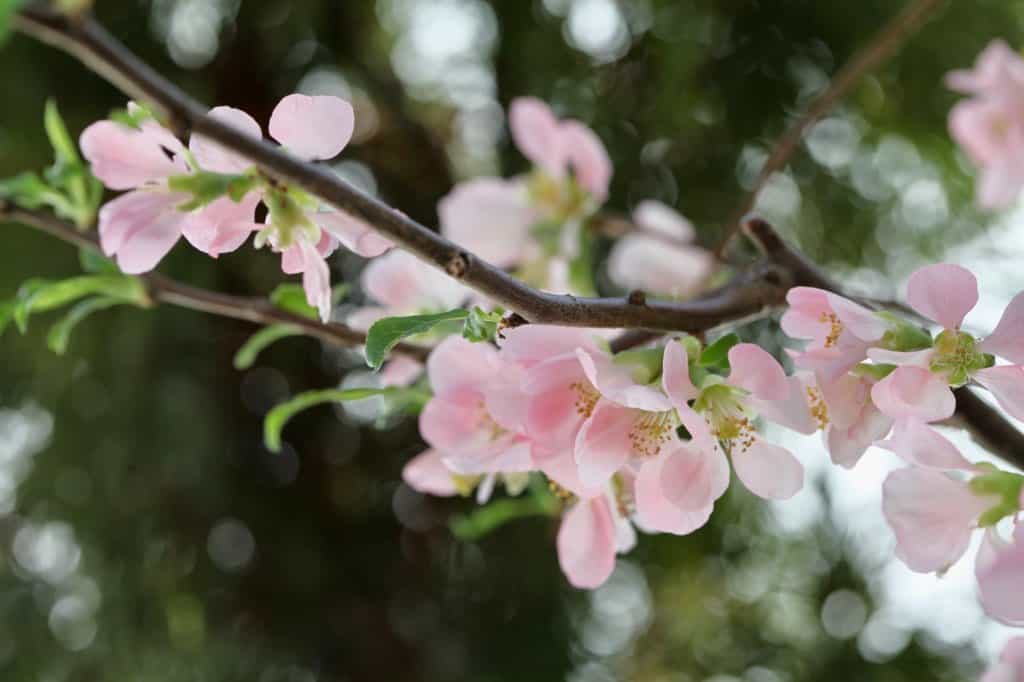
Enjoying flowering branches and blooms inside your home in late winter is an early and almost magical gift from the garden.
This whole process of cutting dormant quince branches to stimulate them to bloom is called "forcing".
The branches are cut and brought inside into the warmth, which tricks them into thinking it's spring.
This causes the branches to wake up out of their winter sleep and period of dormancy. They then slowly release new spring growth in the form of beautiful spring blossoms and leaves, months before their natural bloom time.
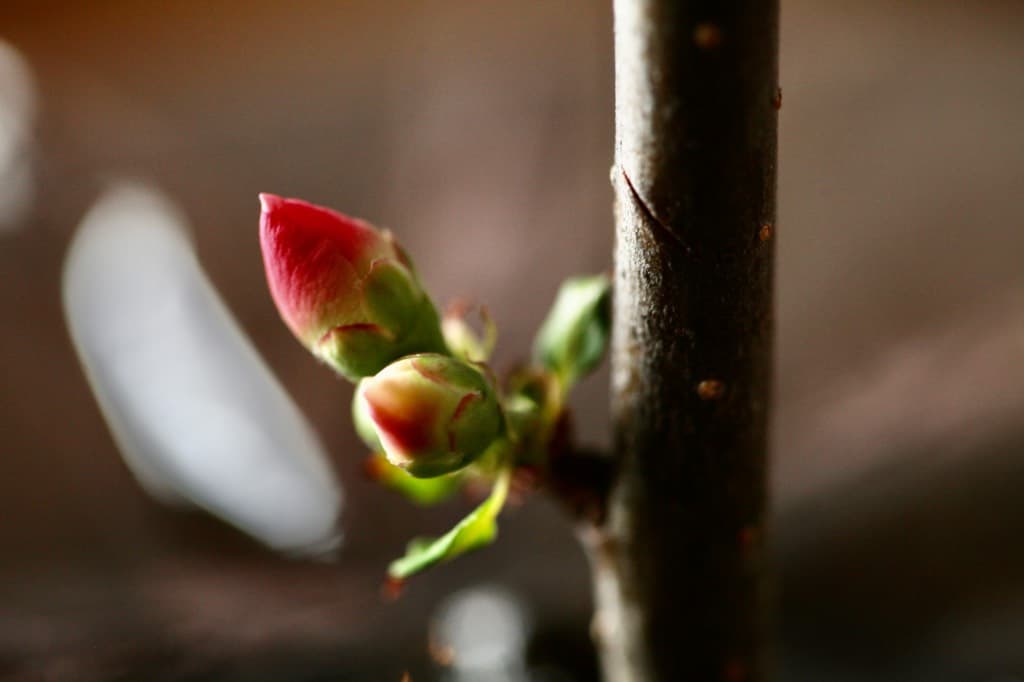
If you would like to learn more about forcing branches in general, you can learn all about it here in this post:
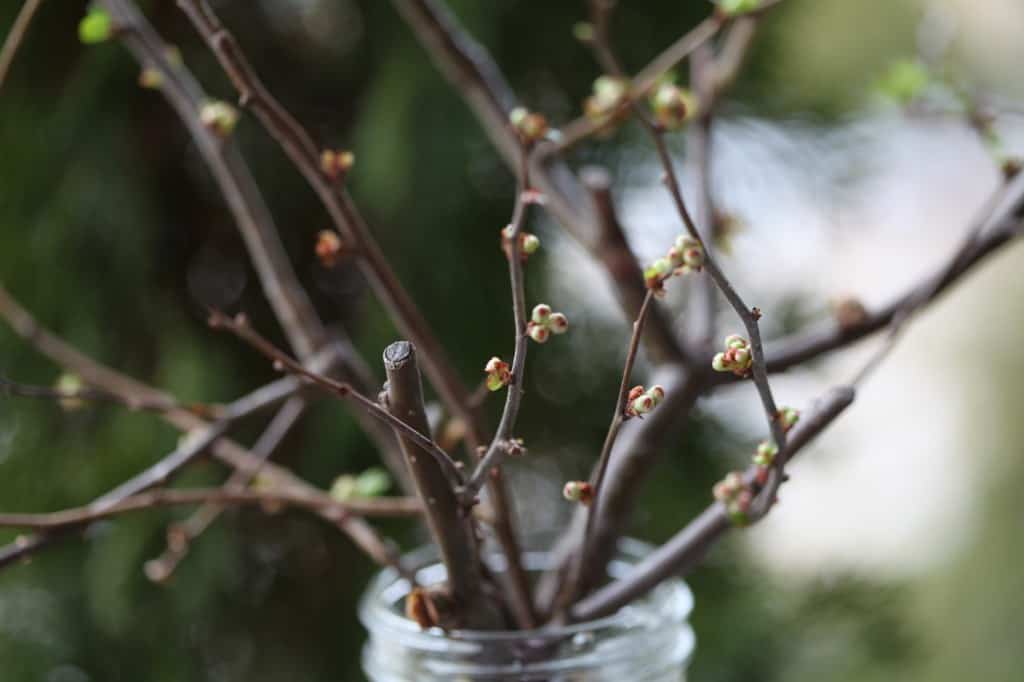
FORCING FLOWERING BRANCHES FOR BEAUTIFUL SPRING BLOOMS
What Are Quince Branches?
Quince branches are those from three species of Chaenomeles, which are deciduous and thorny shrubs within the genus Chaenomeles. These flowering shrubs are woody plants in the family Rosaceae.
The Rosaceae family also contains the fruit trees of pears and apples, which are similar in appearance to quince fruit.
These flowering shrubs produce round, hard and pear-like yellow fruit in late summer, which develop a blush towards the end of the growing season.
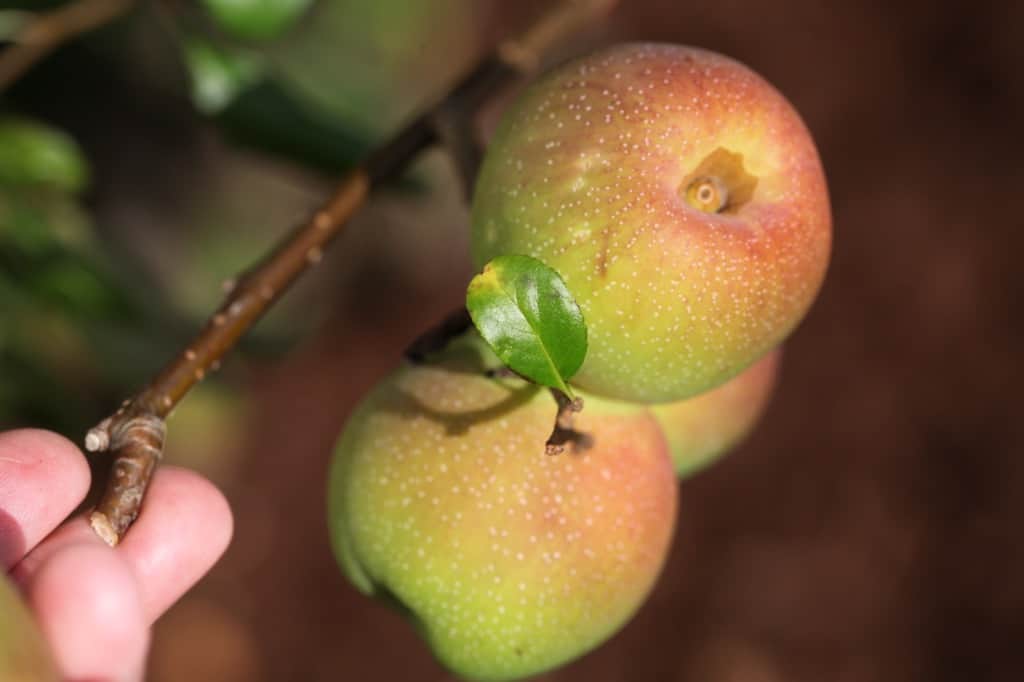
Quince are considered to be ornamental, and produce beautiful apple-blossom like flowers in the springtime.
The beautiful blooms can be large, at 4 cm or 1.6 inches in diameter.
The colour of the blooms can vary from creamy white flowers, to pale peach or pink flowers, and even to warm shades of darker red blooms.
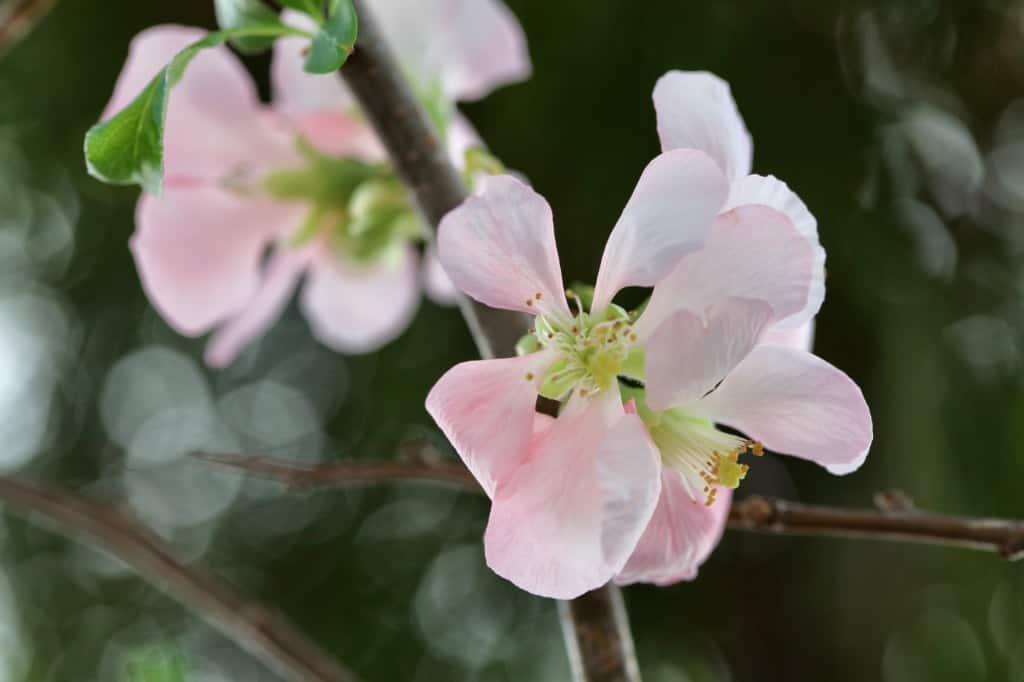
Are Quince Branches Easy To Force?
Ornamental quince branches are very easy to force in winter, if cut at the right time.
The flower buds are formed in the previous season, and are waiting to begin growth after a long winters sleep.
The plants require a period of dormancy and cold exposure prior to blooming the following season. They will require a period of at least six to eight weeks of cold weather, in order for the buds to open and flower in spring.
Quince branches are great for forcing since these shrubs have already formed flower buds on the previous years growth.
The buds are just dormant, and ready to wake up when the weather and warmer temperatures of early spring stimulate growth.
Quince is considered an early spring flowering plant, which makes it an excellent choice for forcing in late winter. Early spring flowering plants are great branches to force, as the flowers open and grow fairly quickly.
Quince branches will bloom quickly with forcing, and generally within several weeks after being cut and brought inside.
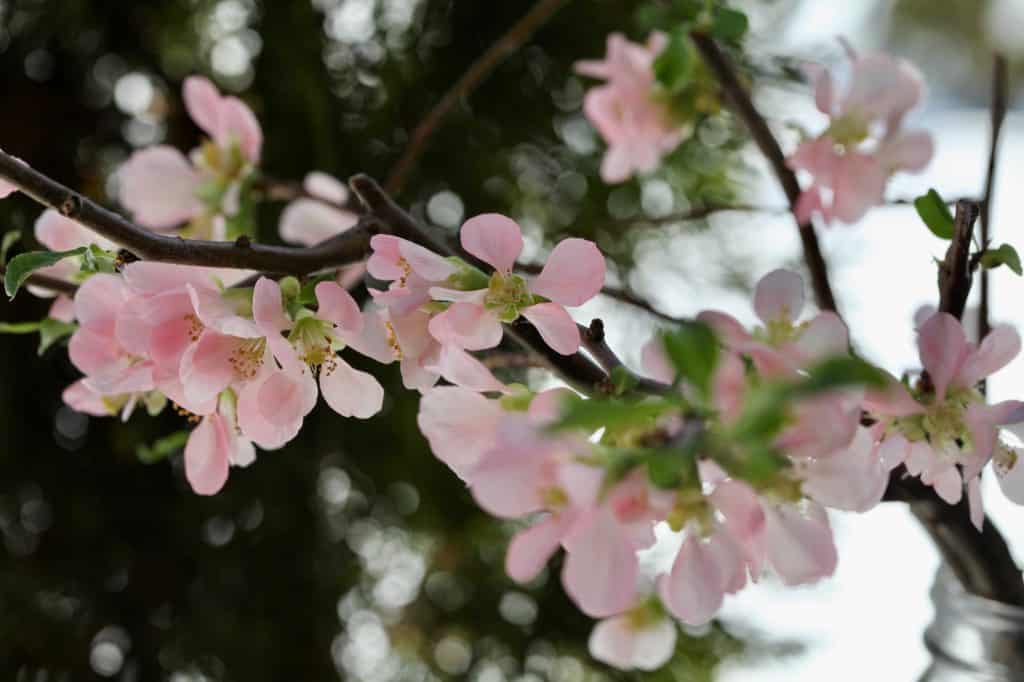
How To Force Quince Branches
Quince branches are easy to force. Let's review the whole process, from the right timing, to where to cut the branches, and then to the actual cutting and forcing process.
When To Cut The Branches
- When removing quince branches from a quince bush to force indoors, it's important to cut them at the right time for best results.
- Cut the branches for forcing in late winter. The best time to cut the branches is when you see the signs of leaf buds and flower buds beginning to swell.
- The buds are easily visible, although sometimes it's difficult to distinguish between the flower buds and leaves at the beginning.
- Be careful not to knock off the small emerging swollen buds during the removal process, as this is where the flowers and leaves will appear during the forcing process.
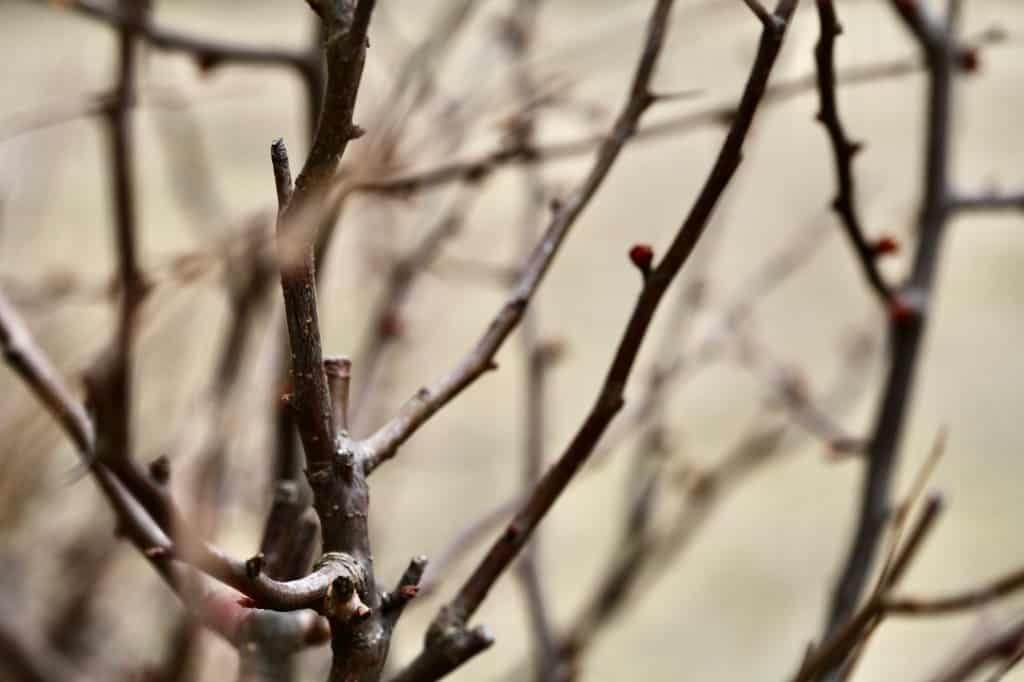
Where To Cut The Branches
- Quince bushes often need pruning, so this is the ideal time to save some branches.
- Quince can be forced from branches that you have pruned from the plant. If you are planning to give your quince shrub a haircut, why not just use these same branches for forcing.
- Quince branches can also be cut for the sole purpose of forcing, without doing any pruning.
- If cutting branches to force without pruning, make sure to select branches from the plant that will not alter it's appearance, or leave a bald spot.
- For example, take from branches that you might tend to prune out anyway, such as those which are crossing. As well, consider taking branches from the back of the bush which would not be missed after removal.
- Select from the branches with lots of plump flower buds for best display.
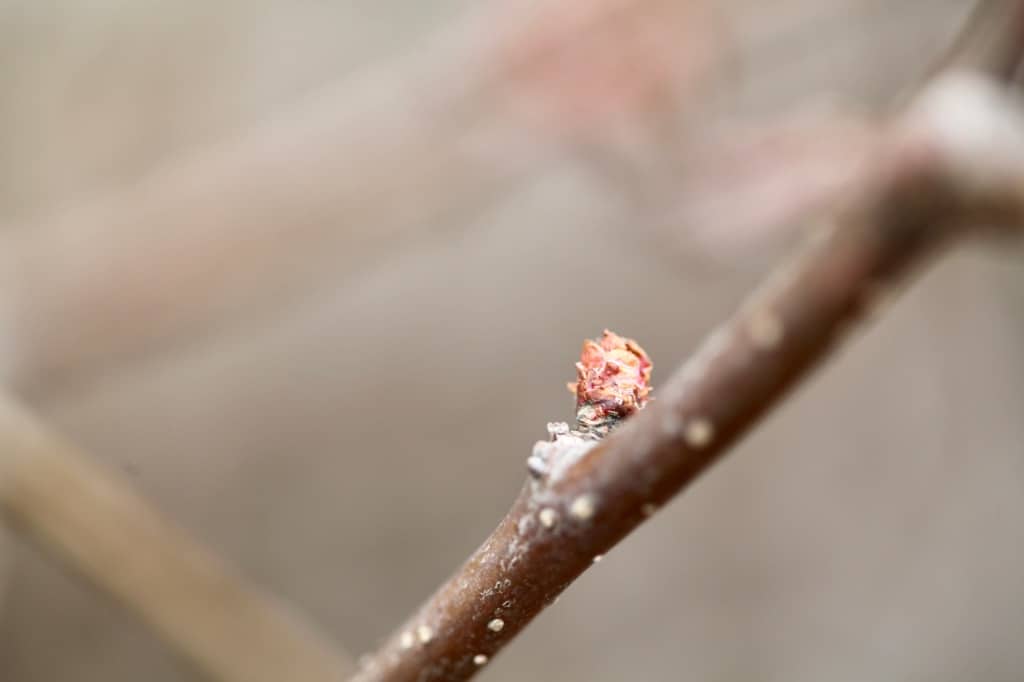
How To Cut The Branches
- Cut branches using a clean pair of sharp pruners.
- Cut the branches at a manageable length to fit the vase or container in which you intend to display them. Two foot lengths will easily fit into a medium sized vase or mason jar.
- Be careful of the small thorns on the old fashioned quince branches when handling them. They can be sharp and spiny.
- Newer cultivars of flowering quince are also available without these thorns.
- Cutting the branches on an angle sometimes helps. It helps to keep the branches from laying against the bottom of the container and blocking water uptake.
- It can also increase the surface area at the cut end of the branch, which helps with water uptake as well.
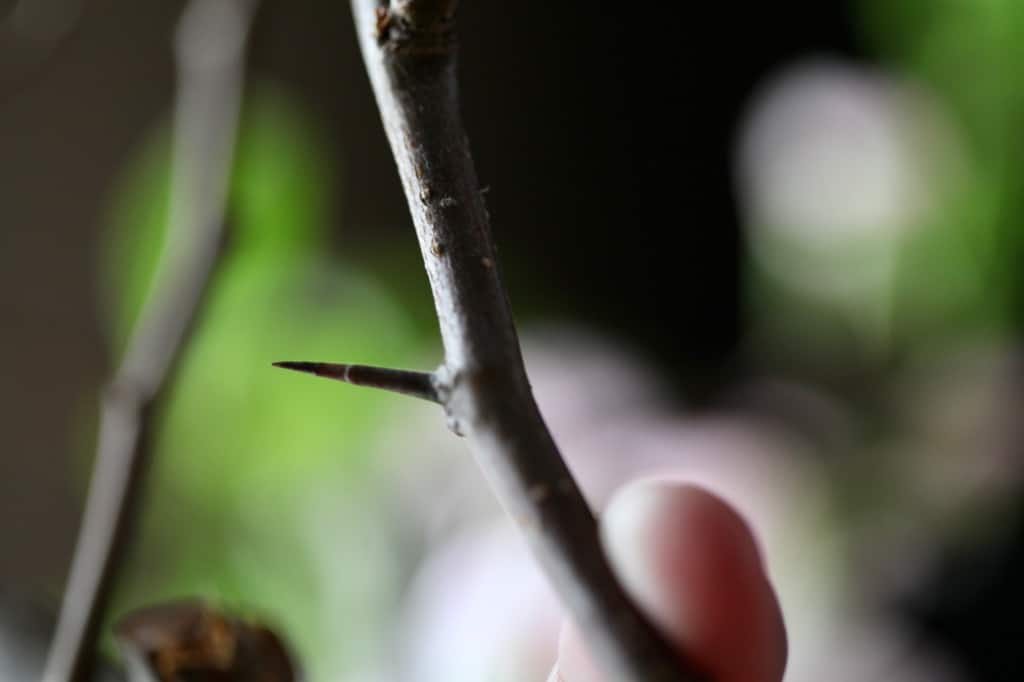
Bringing The Branches Inside
- The next step is to bring the branches inside into a warmer environment.
- Ideally, the best temperature of the indoor environment is not too warm at the beginning. It's important to allow the branches to gradually wake up.
- You can recut the branches once they are brought inside to give them a fresh cut, before placing them into a container or vase of water.
- This also allows you to trim off any possible pieces and stems that you do not want in the vase.
- Make sure that all parts of the branch that are under the water in the vase are free of flower buds, leaves or debris.
- Regarding the type of water to place the stems in, I just used plain water for my own quince branches, and they bloomed very well.
- You can also add plant food or floral preservative to the water as per package direction, to help support the blooming.
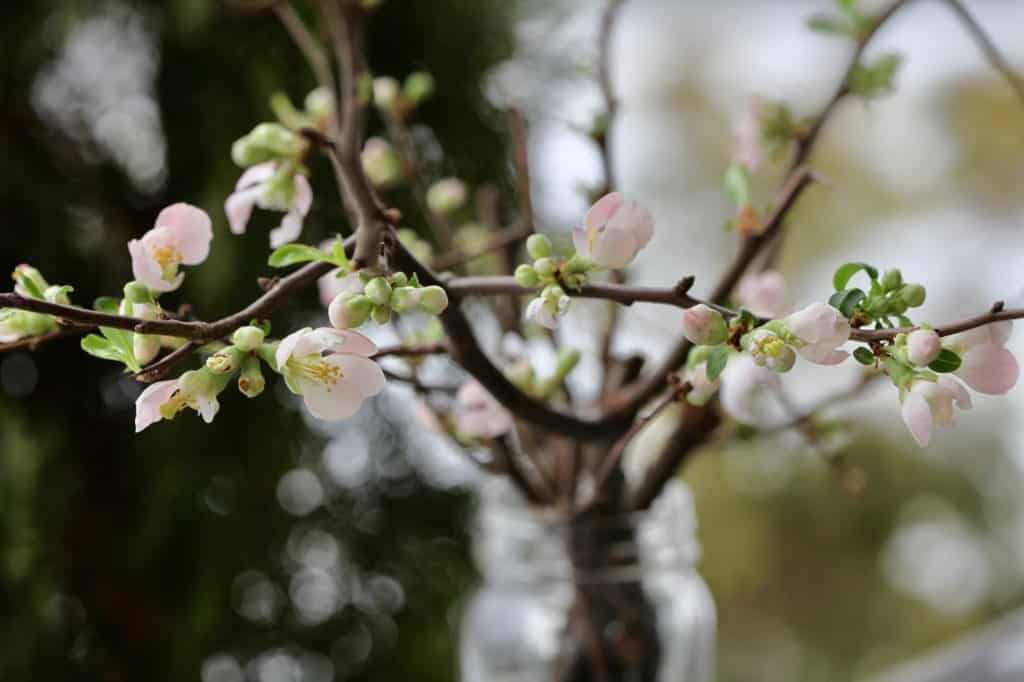
How Do You Care For Quince Branches?
- Keep the vase or container clean to prevent bacterial growth, which can block the branches from absorbing water.
- Change the water every two to three days, or earlier if you notice that the water is getting murky. Fresh water is important for best vase life.
- Keeping the water fresh will also help to prevent any bacterial growth.
- Place the vase in a cool room at night if you wish, to help prolong blooming.
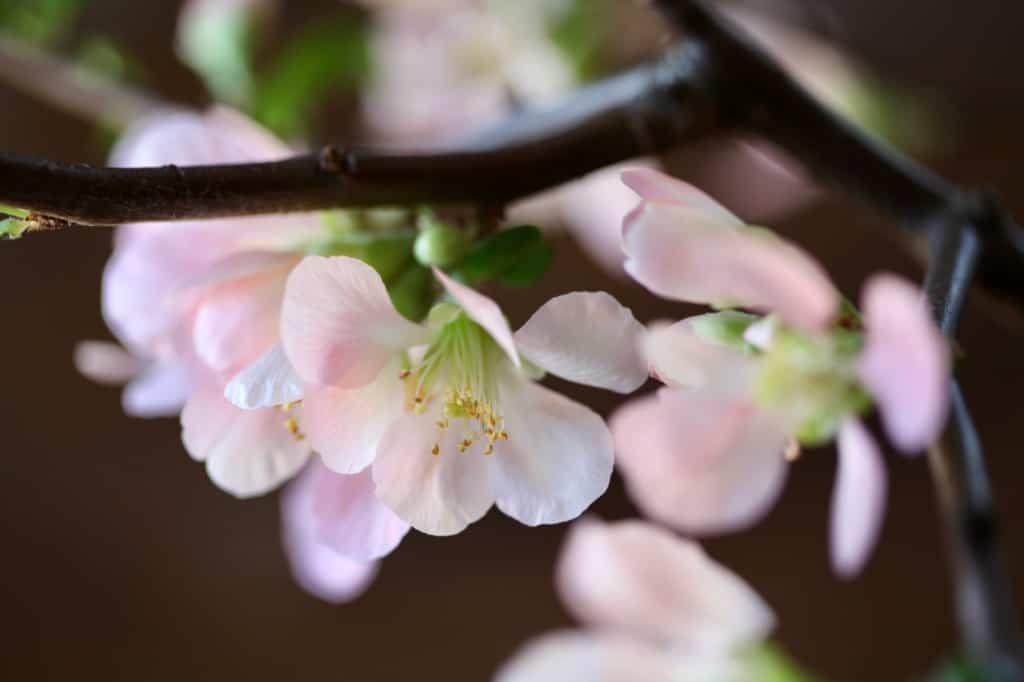
- Keep the container away from heat sources, such as radiators and heaters. These heat sources can interfere with the blooming by providing too much heat all at once. This can in turn cause damage to the blossoms as they are opening.
- Consider the natural environment of these blooming branches, which gradually wake up to the warmth of spring. Try to replicate this, in that you don't provide too much heat all at once.
- Provide some light, however try to keep out of direct sunlight. Bright indirect light is preferred.
- My own quince branches remained in indirect light, at a room temperature of 15°C.
- The quince blossoms in a shadier location lagged behind with blooming time. Those in a brighter location next to a patio door on the west side of the house bloomed with abandon, and put on a beautiful display.
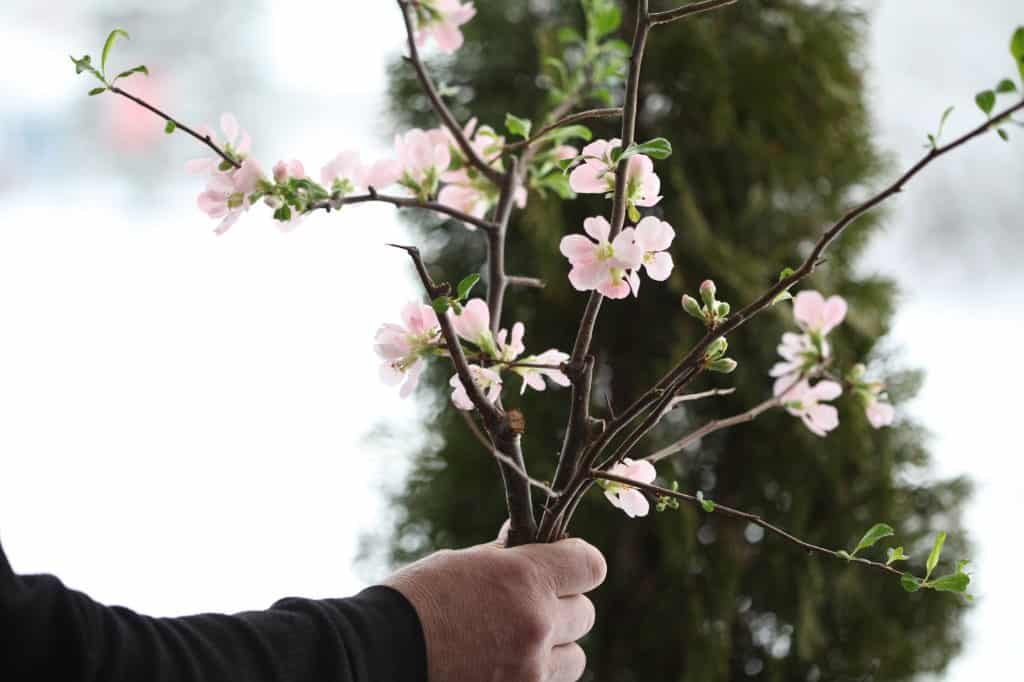
How Long Do Quince Branches Last?
Quince branches can start blooming within several weeks of cutting from the shrub.
Blooming depends on the time of year that the branches were cut. The blooming time is also dependent on the development and swelling of the buds on the branches.
If the branches are cut approximately six weeks before the plant's natural bloom time, the buds will be ready to force into bloom.
After the branches are placed into water, the buds start to slowly enlarge and grow.
Once the buds open and actually begin to bloom, they will continue to do so for another ten to fourteen days.
Vase life for the forced branches therefore can be three to four weeks, depending upon the stage of the branches when cut.
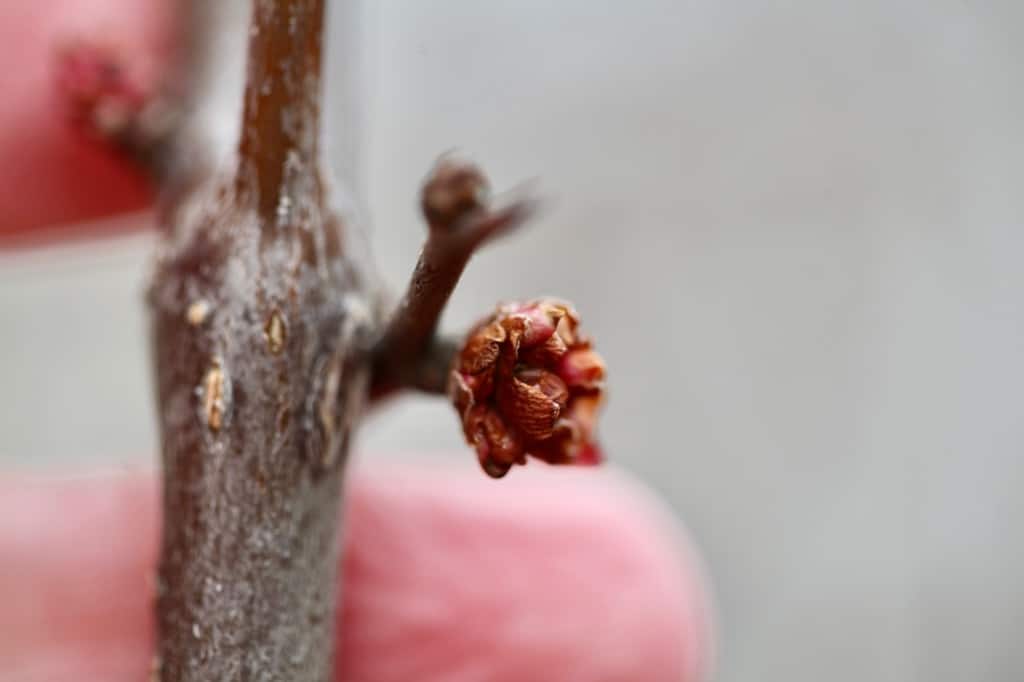
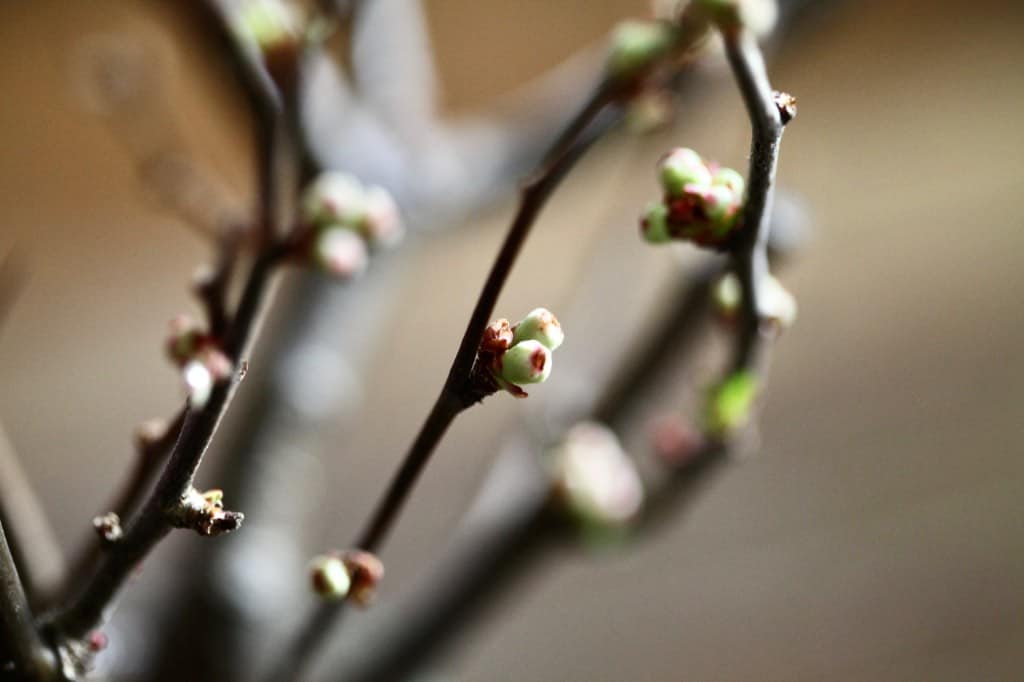
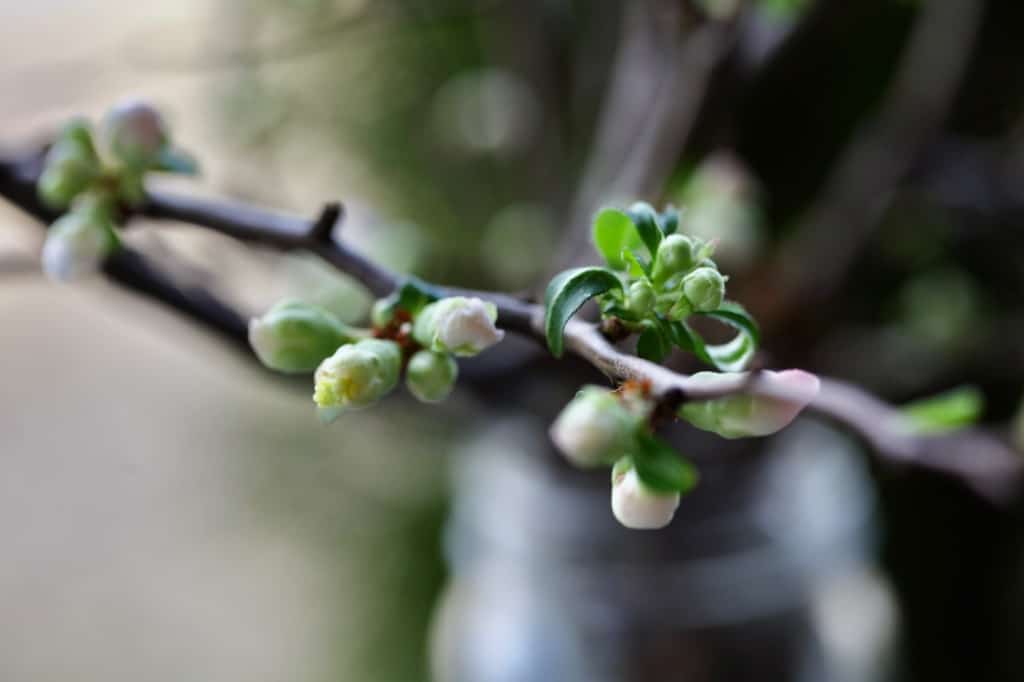
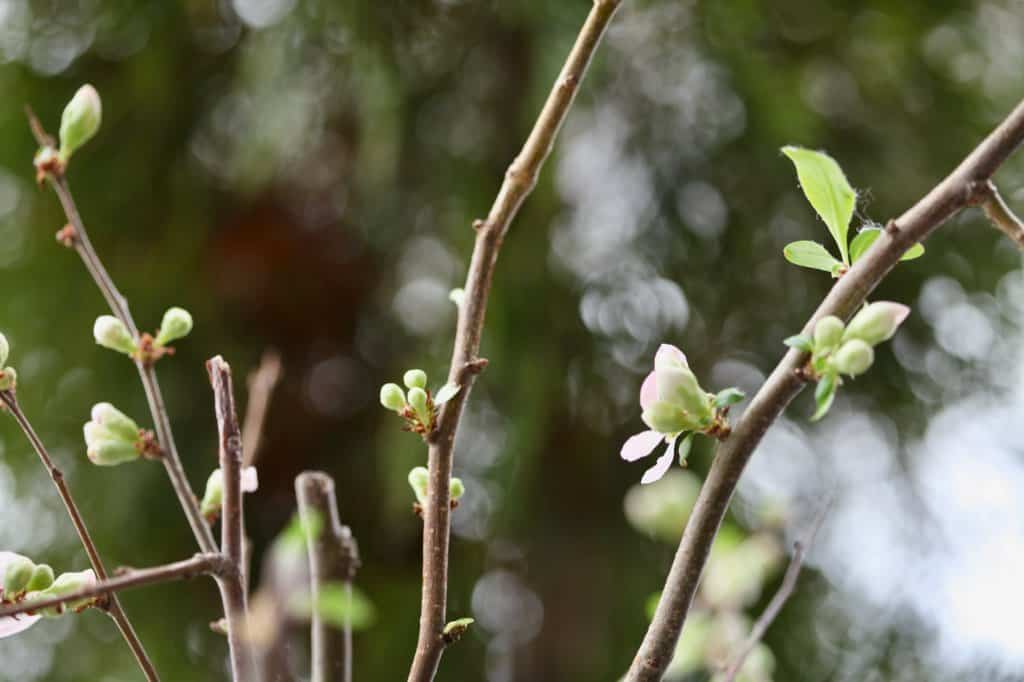
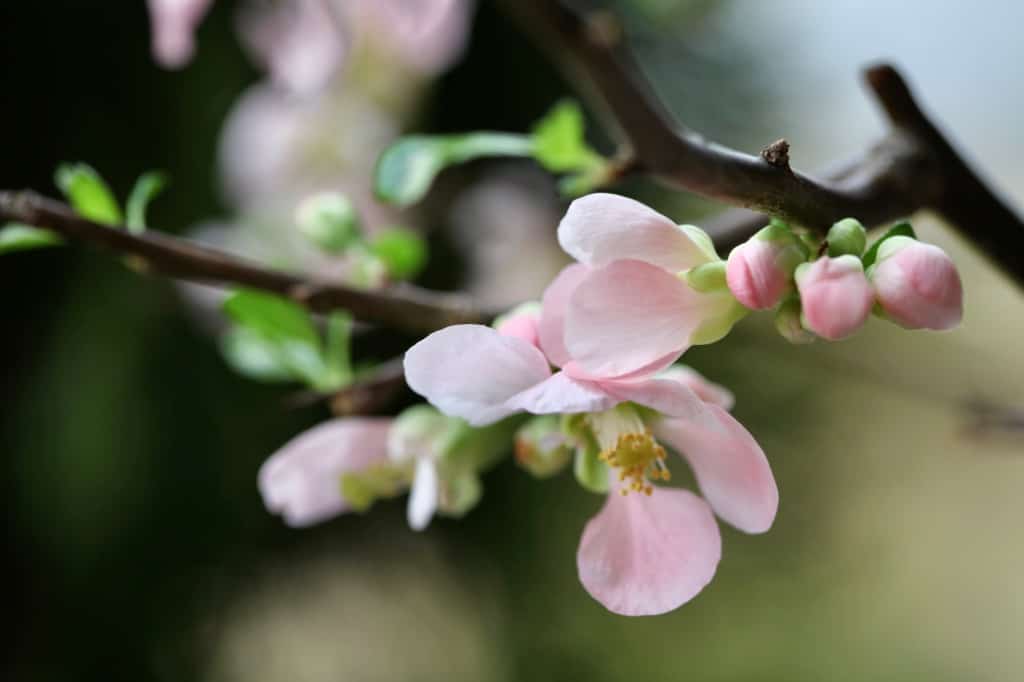
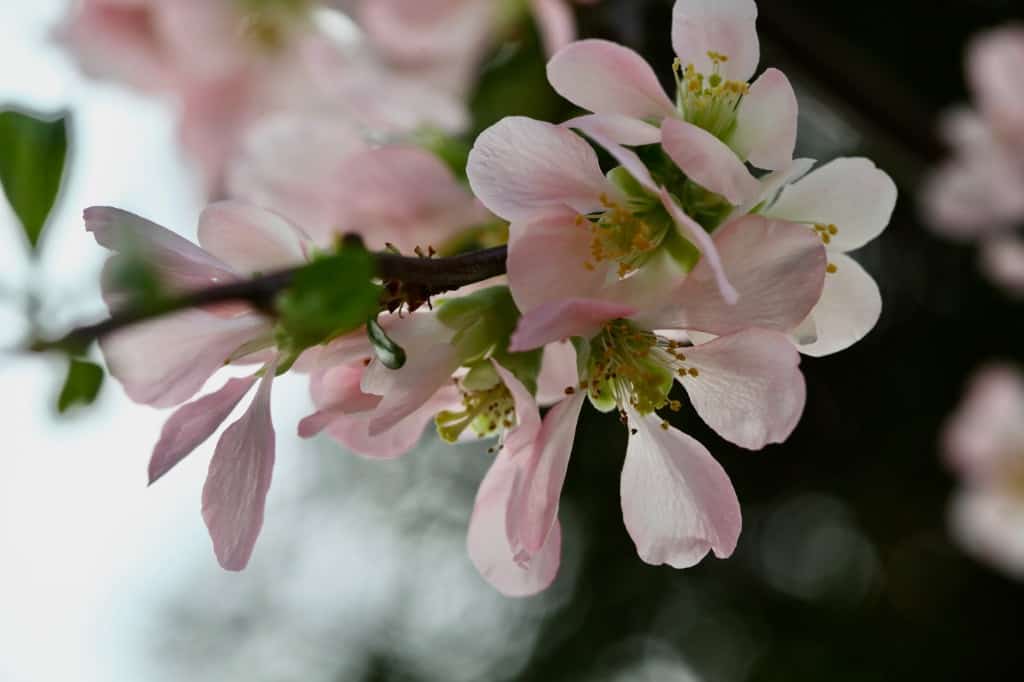
Conclusion
If you have not yet tried your hand at forcing quince branches, I would highly encourage it. Forcing these spring branches is such an easy and rewarding late winter project.
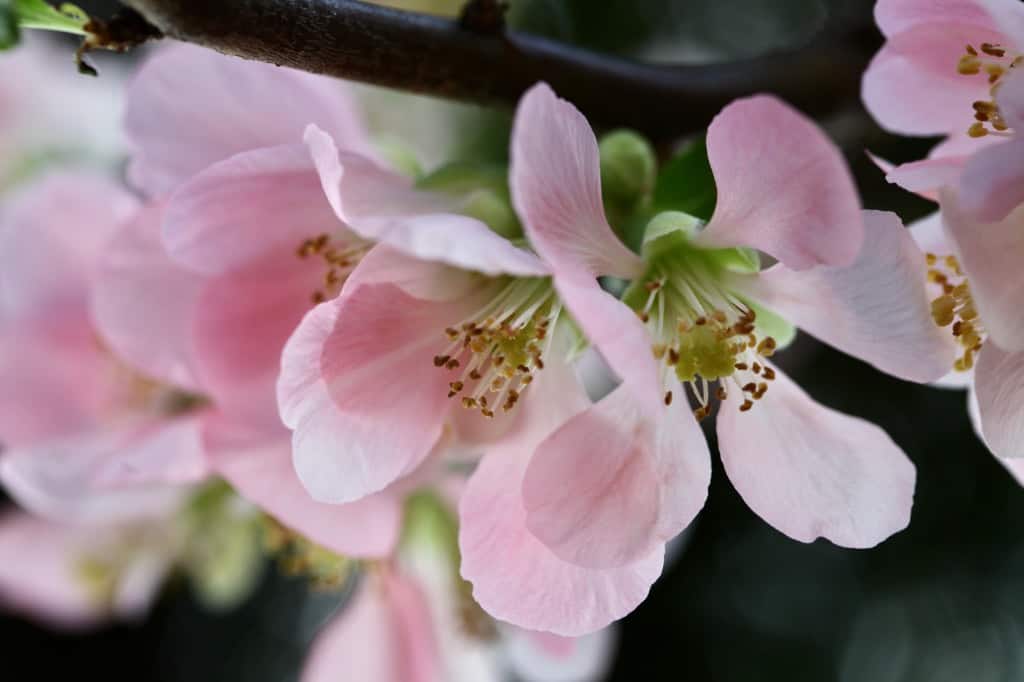
Having a bucket of branches with beautiful spring blossoms in late winter is like having fresh flowers from the garden, and is a gift from mother nature.
Forcing branches is surprising simple with this quick blooming ornamental shrub. Select from branches with lots of buds for the best display.
Quince blooms are elegant and organic.
The appearance of the blooms on the natural dark brown branches is tasteful and simple. The forced branches really add to a sense of anticipation that spring is just around the corner.
I would definitely recommend quince branches to start, if you are just discovering how to force early spring blooms.
The ease of the forcing process, and the fast bloom time of the flowers, makes this garden project well worth the effort, and such a fun gardening experience.
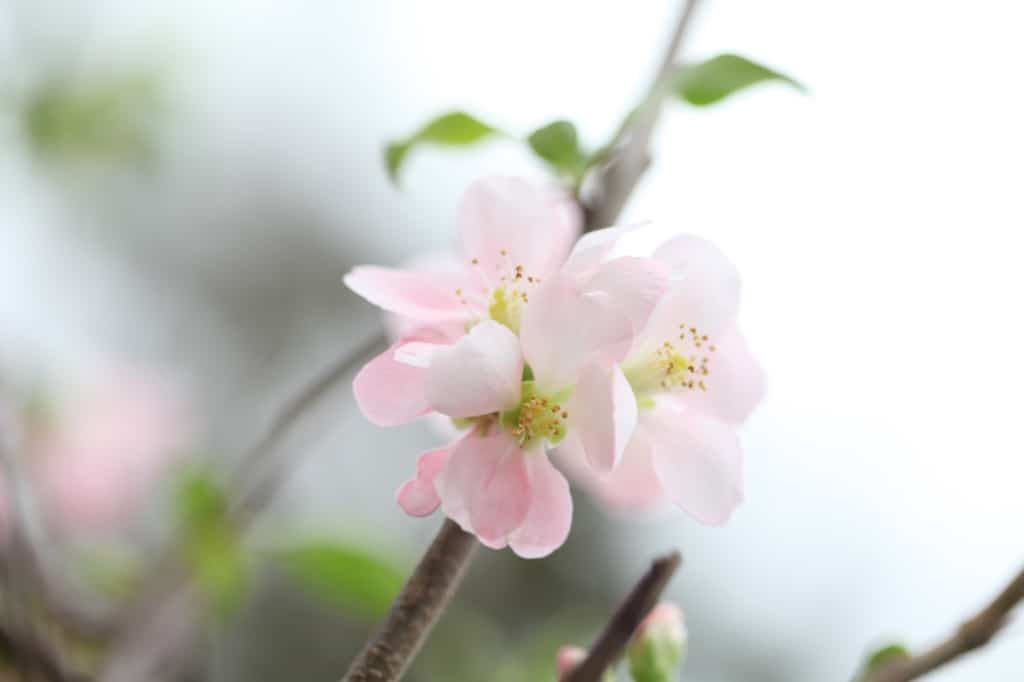
Have you tried your hand at forcing quince branches? Be sure to leave a comment below to share your experience!
Other Posts You May Like:
PIN IT FOR LATER!
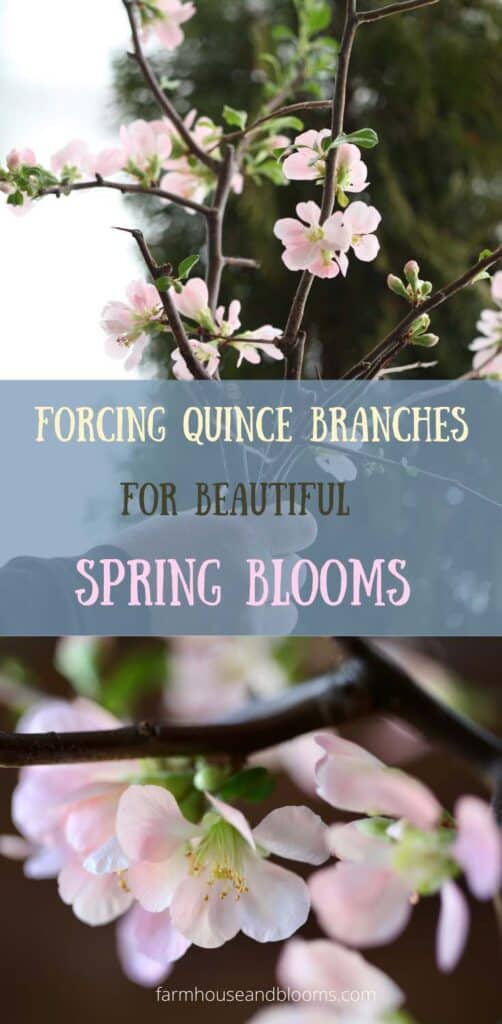
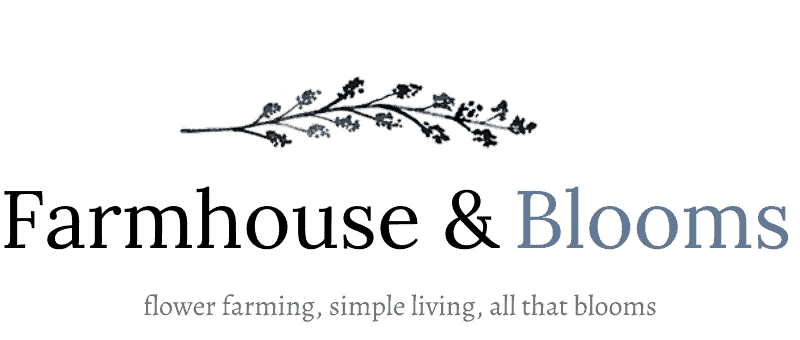

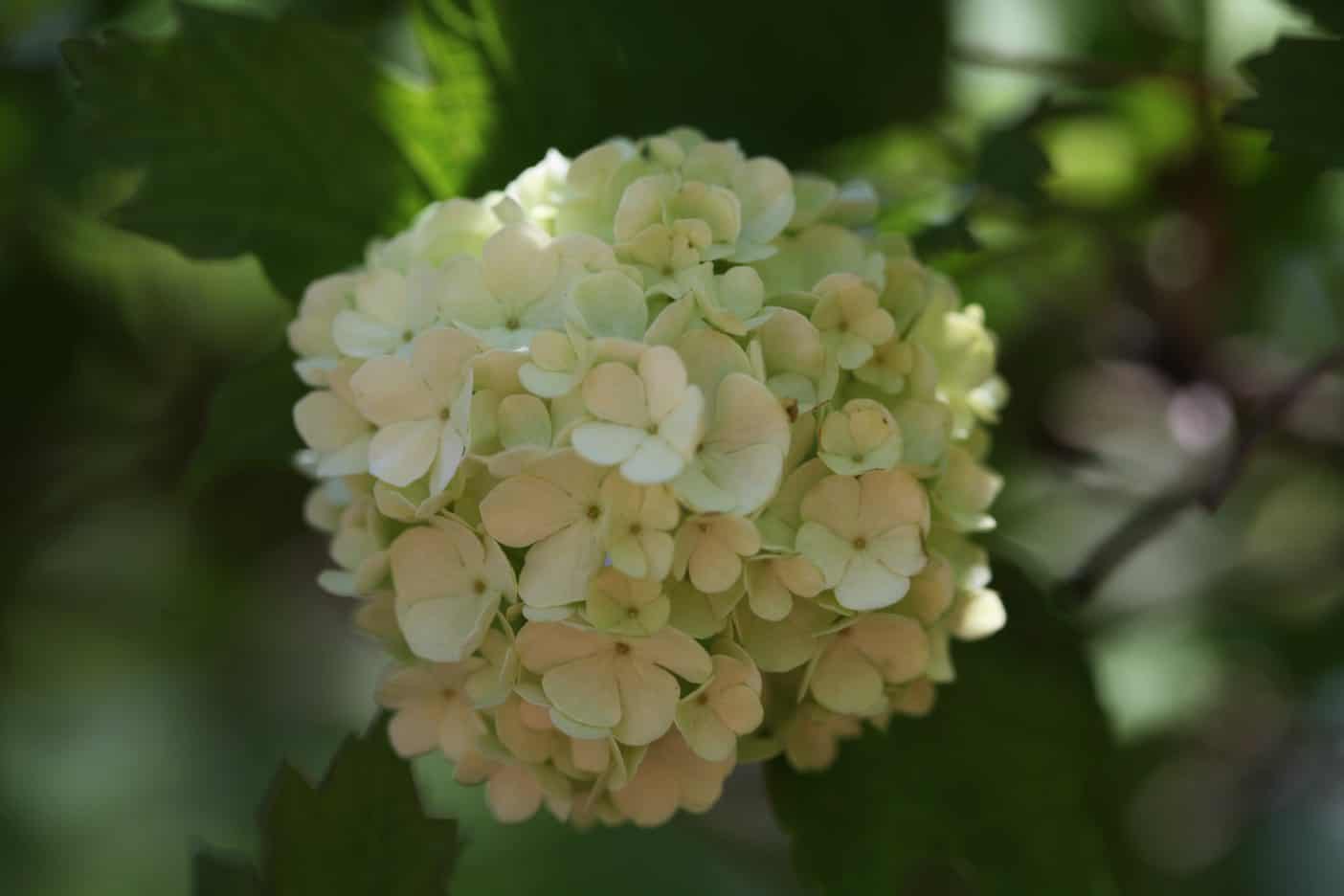
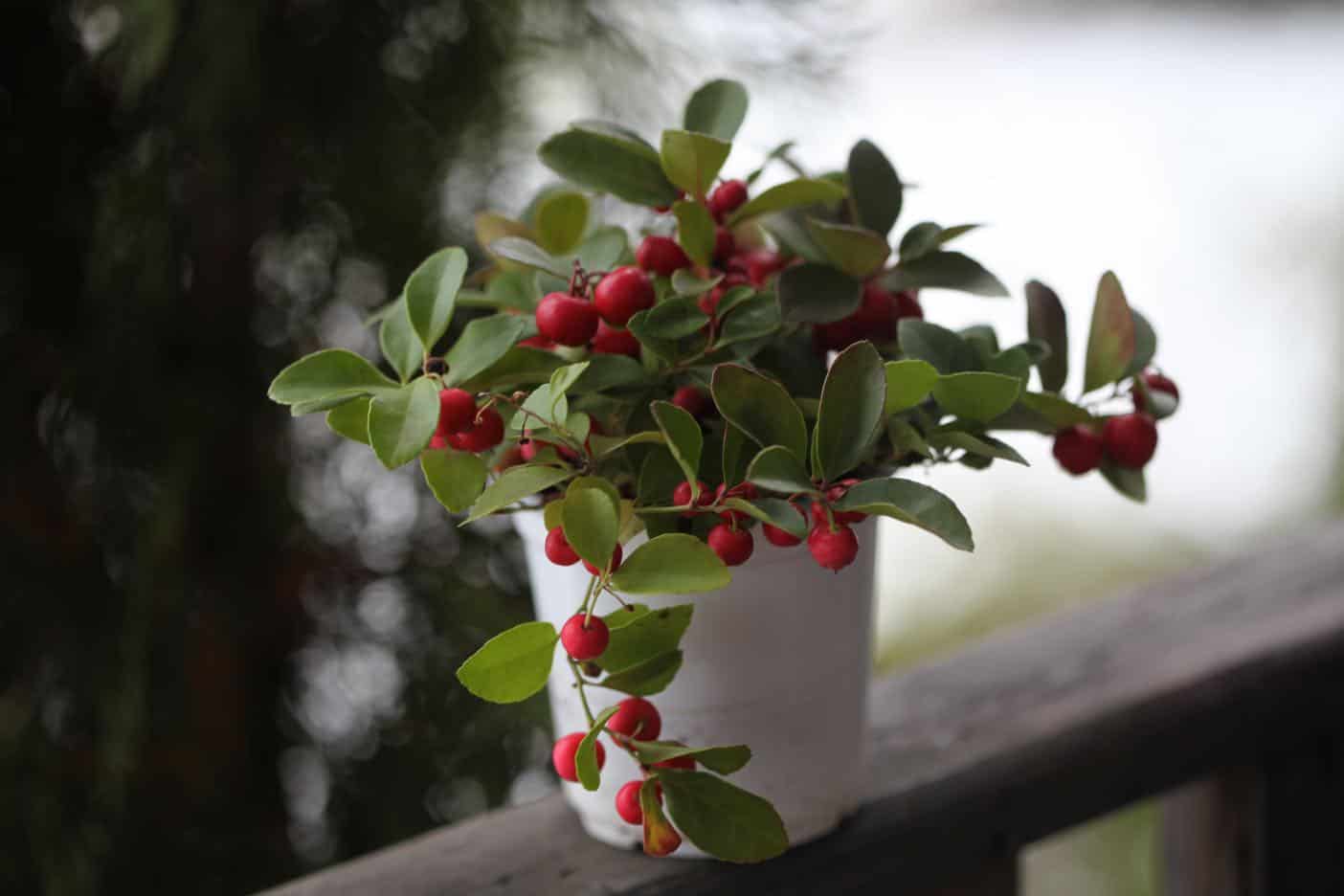
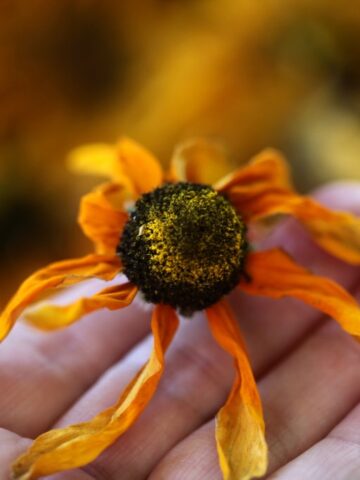
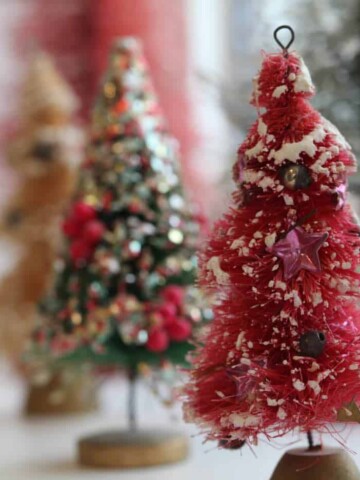
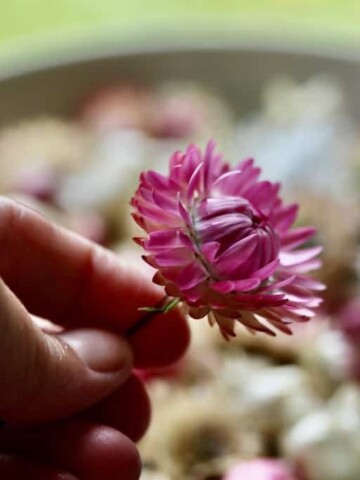

Leave a Reply